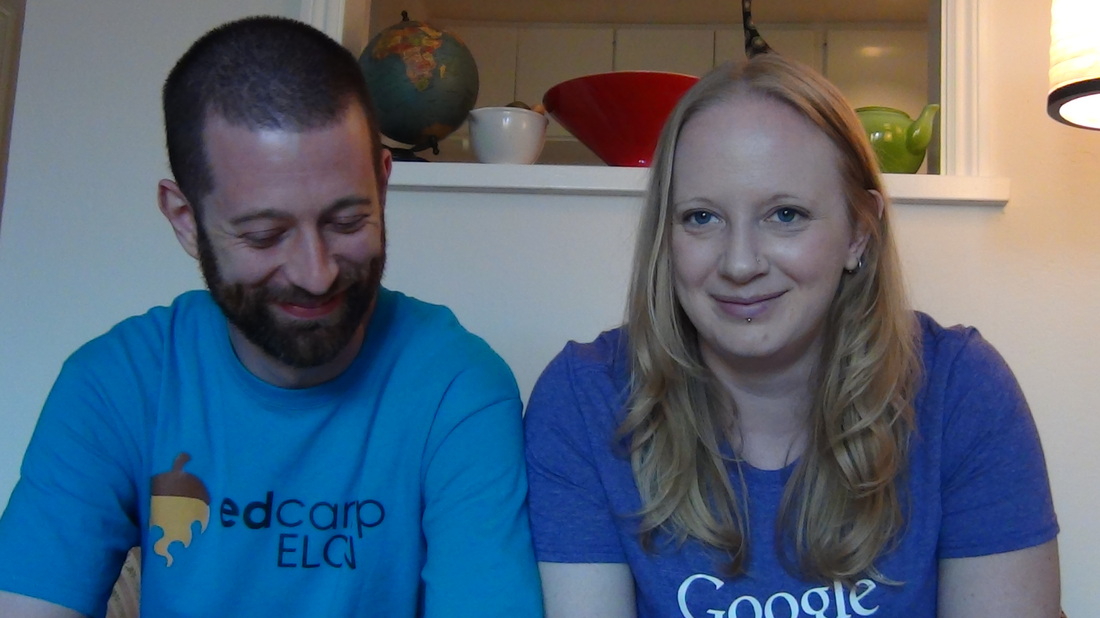In every content area, teachers are asked to cover far more content and help students develop more skills than ever before. Add to that mix the need to teach things like digital citizenship, non-subject specific skills like collaboration and critical thinking, and technological proficiency, and you have a Sisyphean task.
The traditional answer to this problem is just assigning extra practice and content as homework. But that just takes a problem for teachers and passes it on to students and parents. That isn’t a solution.
The solution is to do less. It’s not a popular solution, but it IS a practical one.
For each unit, I choose the information that I think is most real-world, helpful and relevant to my students. Then, I decide what skills would be most appropriate and design the unit around those skills and that content. The last thing to decide is what the final for the unit will be. In my class, the final product often includes puppets and a project.
The most important thing is that I make the scope of the unit something I can achieve using ONLY face-to-face class time. What would traditionally be assigned as homework is just not included. Period.
Let’s look at a practical example from my own classroom.
They divided the river into pieces so each of them travelled one particular section. Each group member wrote four blog posts that talked about the culture, the important figures, the political changes, and the religious practice. Then they made a vlog that summed up the journey. Together, the group created a website to house the posts and videos.
The skills embedded in that project ranged from expository and narrative writing that is suited for an appropriate purpose and audience, thinking historically about the past, and placing themselves in the role of someone from a different culture and time. They had to do research, write, revise, think critically, and be creative. The most important skills were repeated and practiced until students reached mastery. That practice also gave them lots of opportunities to master the content.
I wholeheartedly believe that homework is unnecessary when students are engaged in project-based learning that is designed by a teacher who prioritises skills and content correctly. The appeal of homework is that it allows each unit to include more content or more skills practice. However, more is almost always NOT better in education.
Our job is to inspire students to want to know more, rather than forcing them to learn as much as possible as fast as possible. There is no situation in which forcing students to memorise dates, important figures, and significant events, and then regurgitate it on a test will produce students who find History interesting and meaningful.
I’m using History as an example, but this method is equally relevant to all subjects. It is better for students to master three concepts than to skim six. It is better that students practice one skill ten times than for students to practice ten skills once. And it is better to use face-to-face time well than to use students’ time at home to pile on more content or practice.
The objection to the “do less” method is usually attached to expectations: expectations of mastery in future grades, expectations of parents, expectations of administrators, expectations of colleagues, etc. Those are important considerations, and require a very clear understanding and articulation of what is most important to include and what is not.
Fundamentally, a teacher is a professional who has been trained to meet the needs of his or her students. Sometimes, meeting the needs of your students involves managing the expectations of people other than your students.
An important responsibility for teachers is to present curriculum that allows students to learn effectively without creating the kind of stress that raises affective filter. When students are overwhelmed by the amount or complexity of an assignment, they often shut down. When that happens in class, the teacher can easily address that by modifying the assignment or the procedures, or even completely throwing out the assignment and trying something else.
However, when that happens at home, the only feedback teachers get is whether the assignment is completed, and whether the answers are correct. Unless the student (or his or her parent) is proactive in sharing their feelings and experience, the long-term consequences of bad homework are chronic disengagement and harm to the teacher-student relationship. The worst part is that the teacher may never even know what happened, and so is unable to take steps to rebuild that trust and relationship.
Beyond the relational damage, homework also creates inequality. Students who have few obligations and more parental support succeed, whereas students who have extracurricular activities, athletics, jobs, or obligations to help care for the family are often unable to keep up. It sets up a hierarchy within class where the students who have ideal home environment get ahead and those without that support fall further behind. Again, that results in disengagement and a fracture to the teacher-student relationship.
If an assignment is important enough to ask students to make time for it at home, then it’s important enough to make time for it in class. If a skill is important enough to assign practice at home, it’s important enough to give students enough repetitions of that skill to get to master during class time.
It may not be easy, but it is simple.
For teachers, trying to do everything is a siren song: it’s incredibly tempting, but it always leads to destruction. Overwhelmed teachers overload students in order to try and cover far too much in far too little time. By selectively ignoring “required” content, we significantly improve our ability to teach students effectively. And the cost of not doing so is paid in the relationships within the classroom, as well as in the retention of content and skills.
But this approach also benefits teachers tremendously. With fewer assignments to grade, and work being done entirely in class, teachers will spend less time grading. Shorter assignments can be graded immediately as you walk around helping students. I carry my laptop and enter it right then. For longer assignments, I can monitor students’ work in Google Docs, which allows me to comment on their work in every stage of the process. That means far less grading to do when the assignment is finished. Those two methods have made it so I rarely do school work at home, even though I teach English and assign a lot of writing. My students also get far more feedback this way, and that leads to rapid improvement.
And while I don’t believe in homework and memorisation for students, I think all teachers would benefit from making this their mantra: The only content and skills that are required are the ones my students can learn to mastery.
Repeat that until you believe it. Even if it has to be homework.


 RSS Feed
RSS Feed
